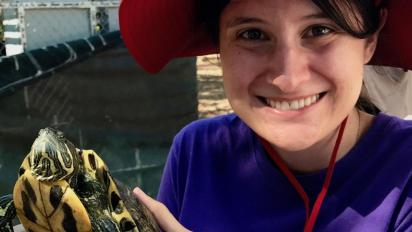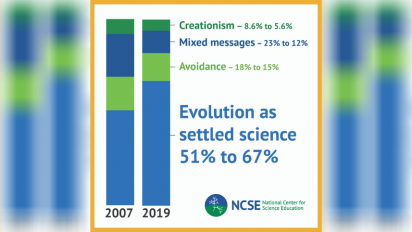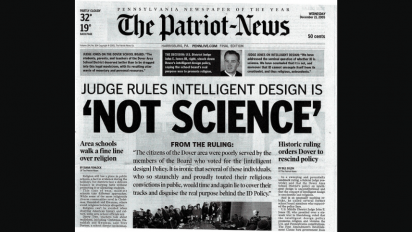Dover was on our radar early, right after Pennsylvania developed new science education standards in 2001 that required the teaching of evolution. (NCSE board member Andrew J. Petto was instrumental in helping to organize citizens to make that happen, by the way. NCSE on the job again!)
We opened the Dover file in 2002 when the high school custodian, objecting both to nudity and the theme of evolution, burned a student-painted mural of early hominids. (You were perhaps expecting Australopithecines to wear khakis?) A creationist member of the school board gloated that he “gleefully watched it burn.”
And then in 2003 biology textbooks were up for selection, beginning a confrontation between teachers and the school board over what would be taught about evolution and what instructional materials would be used to teach it. The teachers wanted to use the standard textbook Biology, authored by Kenneth R. Miller and Joseph S. Levine. But creationists on the school board delayed its adoption for a year, objecting to the fact that the book was “laced with Darwinism,” in the words of one school board member.
In June 2004, creationists on the school board sought instructional materials that would include both evolution and creationism, and proposed the “intelligent design” textbook Of Pandas and People and an intelligent design videotape, Icons of Evolution. The teachers dutifully reviewed both the book and the video, and recommended against them: their science was bad, and neither was in alignment with the state science education standards for content or pedagogy.
Viewing the teachers as uncooperative, the school board subsequently adopted an antievolution policy in mid-October 2004 which read in part: “Students will be made aware of gaps/problems in Darwin’s theory and of other theories of evolution including, but not limited, to intelligent design.” The explicit mention of “intelligent design” in the policy generated much public controversy.
Local citizens independently began contacting Americans United for Separation of Church and State (AU), the Pennsylvania branch of the American Civil Liberties Union (ACLU), and NCSE. A team of these three organizations plus the Philadelphia law firm Pepper Hamilton ended up representing eleven plaintiffs, parents with children in the Dover school system.
I go into such detail about the origin of Kitzmiller v. Dover to emphasize the fact that it was not a necessary conflict. Dover’s teachers tried for years to resolve the disagreement with the school board over the teaching of evolution, and AU, ACLU, and NCSE were not itching for a fight. Unfortunately, a dogmatic creationist faction on the school board insisted upon compromising the teaching of science, rather than compromising with teachers and parents who simply wanted their students and children to get a good education. The plaintiffs felt they had no choice but to sue.









